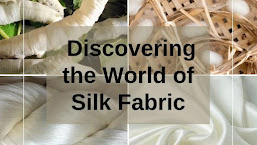
Introduction:
In the vibrant tapestry of Pakistan's textile industry, weaving mills play a pivotal role in transforming yarn into fabric, the cornerstone of textile production. As the industry navigates through a dynamic and ever-evolving landscape, Pakistani weaving mills encounter a spectrum of challenges and opportunities. This comprehensive analysis delves deep into the current phase of Pakistani weaving mills, exploring the intricacies of their operations, the challenges they face, and the avenues for growth and innovation.
Overview of Pakistani Weaving Mills: a. Role and Importance: Weaving mills in Pakistan serve as crucial hubs for fabric production, utilizing various weaving techniques to create a diverse array of textiles. From traditional handlooms to modern shuttle-less looms, these mills employ a spectrum of technologies to meet the demands of domestic and international markets. b. Types of Fabrics Produced: Pakistani weaving mills produce an extensive range of fabrics, catering to diverse sectors such as apparel, home textiles, industrial applications, and technical textiles. Commonly manufactured fabrics include cotton, polyester, blended, and specialty textiles, each tailored to meet specific customer requirements. c. Contribution to the Economy: The weaving sector contributes significantly to Pakistan's economy, generating employment opportunities, driving export revenues, and fostering industrial growth. With a rich legacy of textile craftsmanship and a skilled workforce, Pakistani weaving mills play a vital role in sustaining the country's position as a global textile powerhouse.
Challenges Facing Pakistani Weaving Mills: a. Raw Material Procurement: Ensuring a consistent and quality supply of raw materials, such as yarn and dyes, poses a persistent challenge for weaving mills in Pakistan. Fluctuations in raw material prices, availability issues, and quality concerns impact production costs, schedules, and overall operational efficiency. b. Energy Costs and Supply: High energy costs, coupled with erratic power supply and frequent load shedding, pose significant challenges for weaving mills in Pakistan. The reliance on electricity and gas for weaving operations exacerbates operational expenses, reducing profitability and competitiveness in the global market. c. Technological Upgradation: Many weaving mills in Pakistan grapple with outdated machinery and technology, hindering productivity, efficiency, and product quality. The lack of investments in modernization and technology upgrades limits the mills' ability to meet evolving market demands, adhere to quality standards, and compete with global counterparts. d. Competition from Foreign Mills: Pakistani weaving mills face intense competition from mills in neighboring countries, as well as emerging textile manufacturing hubs globally. Factors such as lower labor costs, government incentives, and advanced technology give foreign mills a competitive edge, challenging the market share and profitability of Pakistani mills. e. Market Volatility and Trade Dynamics: Fluctuations in global demand, changing consumer preferences, and trade dynamics impact the market stability and profitability of Pakistani weaving mills. Economic uncertainties, trade barriers, and geopolitical tensions further exacerbate market volatility, affecting export revenues and business sustainability.
Strategies and Innovations Adopted by Pakistani Weaving Mills: a. Investment in Technology: To enhance productivity, efficiency, and product quality, weaving mills in Pakistan are increasingly investing in modern machinery and technology. Automation, digitalization, and advanced loom technologies improve weaving processes, reduce labor dependency, and enable customization to meet customer demands. b. Product Diversification: Pakistani weaving mills are exploring opportunities for product diversification, targeting niche markets and specialty segments. By producing innovative fabrics such as technical textiles, eco-friendly textiles, and smart textiles, mills can differentiate themselves, command premium prices, and expand their customer base. c. Sustainable Practices: With growing environmental consciousness among consumers and regulatory pressures, Pakistani weaving mills are embracing sustainable practices. From eco-friendly dyeing processes and water conservation measures to renewable energy adoption and waste management initiatives, mills are aligning with sustainability goals to enhance their competitiveness and appeal to environmentally conscious consumers. d. Value Addition and Customization: Weaving mills in Pakistan are focusing on value addition and customization to differentiate their products in the market. By offering customized solutions, personalized designs, and added-value services such as fabric finishing and embellishments, mills can cater to diverse customer requirements and foster long-term relationships. e. Strategic Partnerships and Collaborations: Collaborations with international partners, technology providers, and research institutions enable Pakistani weaving mills to access expertise, innovation, and market insights. Strategic partnerships facilitate knowledge transfer, technology adoption, and market expansion, empowering mills to stay abreast of global trends and remain competitive in the industry.
Government Support and Policy Initiatives: a. Industry Incentives: The Pakistani government provides various incentives and support measures to promote the growth and competitiveness of the textile industry, including weaving mills. Subsidies, tax exemptions, export financing schemes, and investment incentives incentivize mills to invest in modernization, technology upgrades, and capacity expansion. b. Skill Development Programs: Skill development initiatives and vocational training programs aim to enhance the technical expertise and capabilities of the workforce employed in weaving mills. By investing in skill development, the government seeks to address labor shortages, improve productivity, and ensure the industry's long-term sustainability. c. Trade Facilitation: The government focuses on facilitating trade and export promotion to bolster the competitiveness of weaving mills in Pakistan. Trade agreements, preferential tariffs, trade delegations, and export promotion initiatives facilitate market access, reduce trade barriers, and enhance export competitiveness in international markets. d. Policy Reforms: Regulatory reforms and policy interventions aim to address key challenges faced by weaving mills, such as energy shortages, infrastructure bottlenecks, and regulatory complexities. Streamlining regulatory processes, improving infrastructure, and enhancing ease of doing business create an enabling environment for industry growth and investment.
Conclusion: Pakistani weaving mills operate in a dynamic and challenging environment, characterized by a mix of obstacles and opportunities. While challenges such as raw material procurement, energy costs, technological limitations, competition, and market volatility persist, weaving mills in Pakistan also benefit from technological advancements, product diversification, sustainable practices, strategic partnerships, and government support initiatives. By adopting strategic approaches, embracing innovation, and leveraging government support, Pakistani weaving mills can navigate challenges, seize opportunities, and emerge as leaders in the global textile industry, weaving the fabric of success for the nation's economic prosperity and industrial growth.


.jpg)

0 Comments